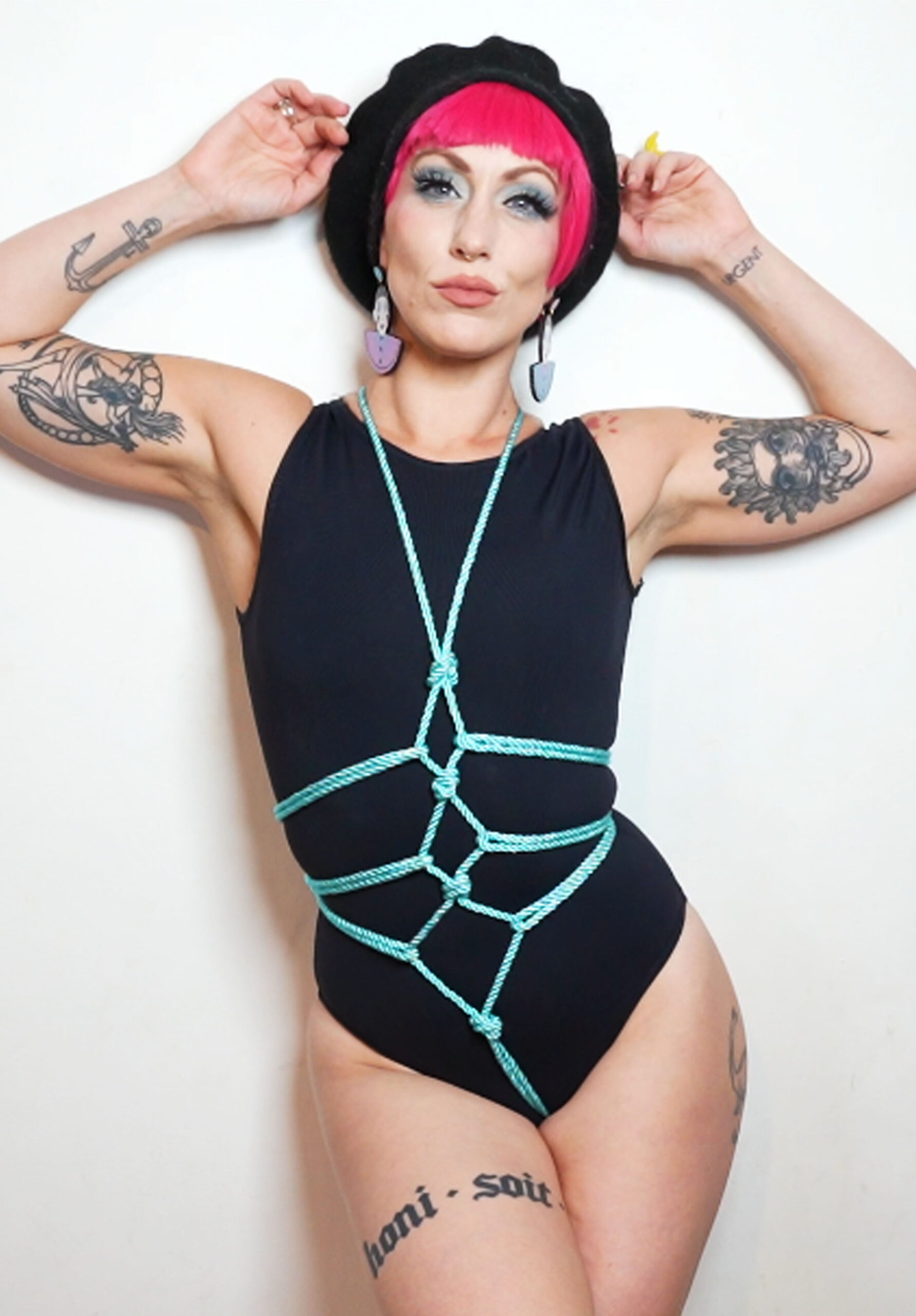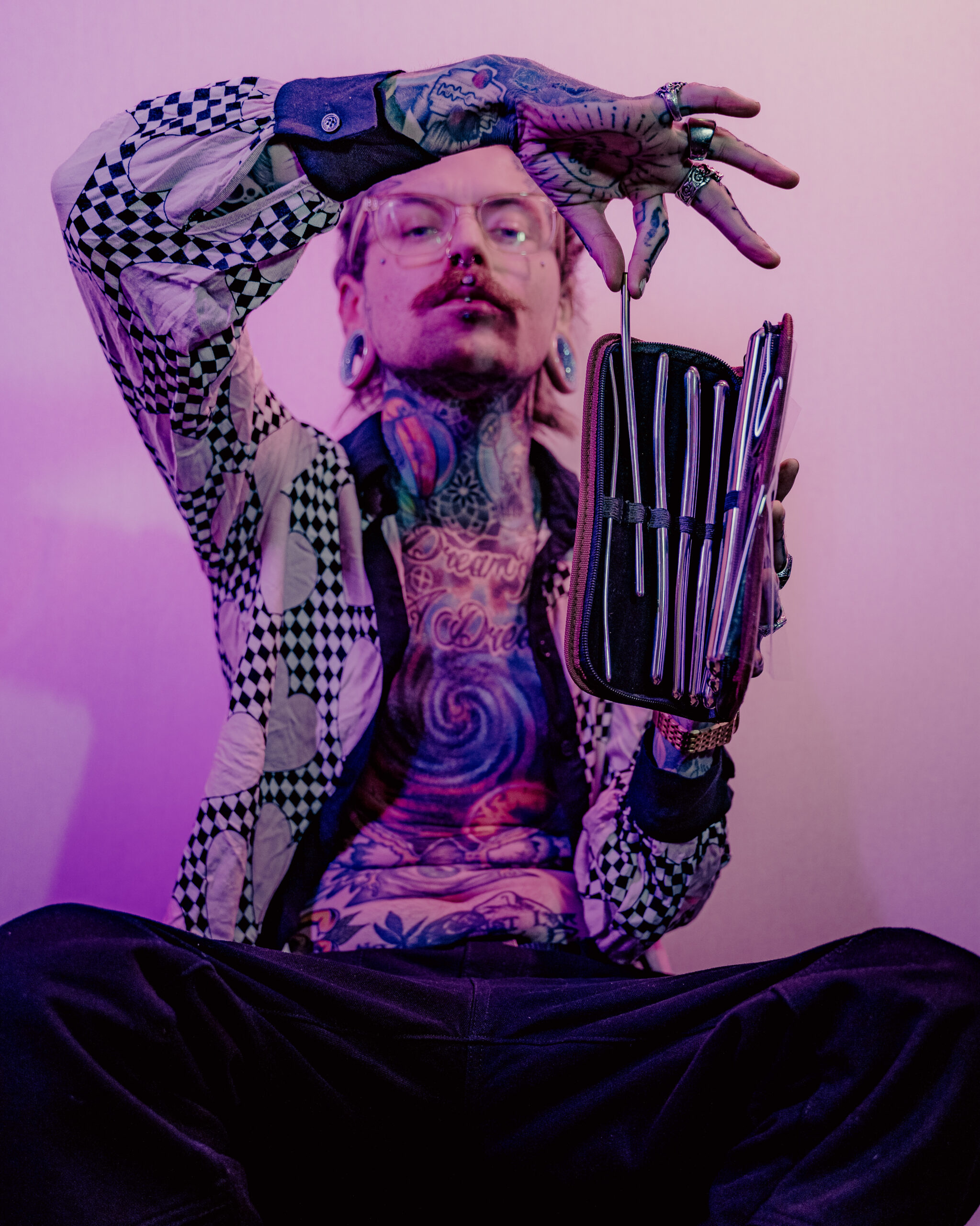Defining Asexuality
Asexuality is a sexual orientation characterized by a lack of sexual attraction to others. It’s important to remember that asexual individuals can experience romantic attraction, emotional intimacy, and form loving relationships, but they don’t feel sexual desire.
Asexual people are diverse, with varying levels of attraction, comfort with physical touch, and relationship styles. Some asexual individuals may identify as aromantic (experiencing no romantic attraction), while others identify as both asexual and romantic.
Spectrum of Asexuality
Understanding the spectrum of asexuality is crucial for fostering inclusivity and accurate representation. Asexual people are not a monolith; their experiences and expressions of asexuality vary greatly. Some asexual individuals may experience only sexual attraction to specific types or genders, while others might be entirely without sexual attraction.
This spectrum can encompass various identities like demisexual (experiencing sexual attraction only after forming a strong emotional bond), gray-sexual (experiencing sexual attraction infrequently or under certain circumstances), and lithromantic (experiencing romantic attraction but not sexual attraction).
Common Misconceptions about Asexuality
Despite growing awareness, several misconceptions about asexuality persist within society. These misconceptions often stem from a lack of understanding and exposure to the diverse experiences of asexual people.
- Asexual people don’t experience attraction or intimacy.
- Asexuality is a choice or something that can be changed.
- All asexual people are the same.
- Asexual people lack romantic interest or desire for relationships.
It’s crucial to challenge these misconceptions and promote accurate information about asexuality. Asexual individuals are diverse in their experiences, identities, and relationship preferences.
Navigating Relationships as an Asexual Person
Navigating relationships as an asexual person can be both enriching and challenging within today’s dating culture.
Understanding the spectrum of asexuality is crucial for fostering inclusivity and accurate representation. Asexual people are not a monolith; their experiences and expressions of asexuality vary greatly. Some asexual individuals may experience only sexual attraction to specific types or genders, while others might be entirely without sexual attraction.
- Understanding the Spectrum
- Communication is Key
- Setting Boundaries
Communicating Asexuality to Potential Partners
Communicating asexuality to potential partners can be an important step in finding compatible relationships. It allows for open and honest conversations about desires, expectations, and boundaries.
Being upfront about one’s asexuality from the start can help avoid misunderstandings and prevent hurt feelings later on.
Explaining what asexuality means to you personally can be helpful. Some asexual people choose to use metaphors or analogies to illustrate their lack of sexual attraction, while others prefer a straightforward explanation.
It’s important to remember that there’s no single “right” way to come out as asexual. What works best will depend on individual preferences and comfort levels.
Dating Apps and Asexuality
Asexuality is a sexual orientation characterized by a lack of sexual attraction to others. It’s important to remember that asexual individuals can experience romantic attraction, emotional intimacy, and form loving relationships, but they don’t feel sexual desire.
Asexual people are diverse, with varying levels of attraction, comfort with physical touch, and relationship styles. Some asexual individuals may identify as aromantic (experiencing no romantic attraction), while others identify as both asexual and romantic.
Understanding the spectrum of asexuality is crucial for fostering inclusivity and accurate representation. Asexual people are not a monolith; their experiences and expressions of asexuality vary greatly. Some asexual individuals may experience only sexual attraction to specific types or genders, while others might be entirely without sexual attraction.
This spectrum can encompass various identities like demisexual (experiencing sexual attraction only after forming a strong emotional bond), gray-sexual (experiencing sexual attraction infrequently or under certain circumstances), and lithromantic (experiencing romantic attraction but not sexual attraction).
Navigating relationships as an asexual person can be both enriching and challenging within today’s dating culture.
- Understanding the Spectrum
- Communication is Key
- Setting Boundaries
Communicating asexuality to potential partners can be an important step in finding compatible relationships. It allows for open and honest conversations about desires, expectations, and boundaries.
Being upfront about one’s asexuality from the start can help avoid misunderstandings and prevent hurt feelings later on.
Explaining what asexuality means to you personally can be helpful. Some asexual people choose to use metaphors or analogies to illustrate their lack of sexual attraction, while others prefer a straightforward explanation.
It’s important to remember that there’s no single “right” way to come out as asexual. What works best will depend on individual preferences and comfort levels.
Representation of Asexuality in Media
Asexuality is a sexual orientation characterized by a lack of sexual attraction to others. It’s important to remember that asexual individuals can experience romantic attraction, emotional intimacy, and form loving relationships, but they don’t feel sexual desire.
Asexual people are diverse, with varying levels of attraction, comfort with physical touch, and relationship styles. Some asexual individuals may identify as aromantic (experiencing no romantic attraction), while others identify as both asexual and romantic.
Understanding the spectrum of asexuality is crucial for fostering inclusivity and accurate representation. Asexual people are not a monolith; their experiences and expressions of asexuality vary greatly. Some asexual individuals may experience only sexual attraction to specific types or genders, while others might be entirely without sexual attraction.
This spectrum can encompass various identities like demisexual (experiencing sexual attraction only after forming a strong emotional bond), gray-sexual (experiencing sexual attraction infrequently or under certain circumstances), and lithromantic (experiencing romantic attraction but not sexual attraction).
Navigating relationships as an asexual person can be both enriching and challenging within today’s dating culture.
- Understanding the Spectrum
- Communication is Key
- Setting Boundaries
Communicating asexuality to potential partners can be an important step in finding compatible relationships. It allows for open and honest conversations about desires, expectations, and boundaries.
Being upfront about one’s asexuality from the start can help avoid misunderstandings and prevent hurt feelings later on.
Explaining what asexuality means to you personally can be helpful. Some asexual people choose to use metaphors or analogies to illustrate their lack of sexual attraction, while others prefer a straightforward explanation.
It’s important to remember that there’s no single “right” way to come out as asexual. What works best will depend on individual preferences and comfort levels.
The Impact of Representation on Public Perception
Representation plays a crucial role in shaping public perception of any group, including the asexual community. Accurate and inclusive representation helps challenge stereotypes and misconceptions, fostering understanding and acceptance.
A lack of representation can contribute to the perpetuation of harmful myths about asexuality. When asexual people are absent from media, popular culture, and public discourse, it reinforces the idea that asexuality is rare, abnormal, or nonexistent. This can lead to invisibility, isolation, and feelings of shame for those who identify as asexual.
Conversely, positive and diverse representation can have a profound impact. Seeing asexual characters portrayed authentically in movies, TV shows, books, and other media helps normalize their experiences and demonstrates that asexuality is a valid and legitimate sexual orientation. It allows asexual individuals to see themselves reflected in the world around them, fostering a sense of belonging and validating their identities.
Furthermore, accurate representation educates the public about asexuality, dispelling myths and promoting understanding.
By showcasing the diverse experiences, relationships, and perspectives of asexual people, representation can contribute to creating a more inclusive and accepting society for all.
Stigma and Discrimination Faced by Asexual Individuals
Asexuality is a sexual orientation characterized by a lack of sexual attraction to others. It’s important to remember that asexual individuals can experience romantic attraction, emotional intimacy, and form loving relationships, but they don’t feel sexual desire.
Asexual people are diverse, with varying levels of attraction, comfort with physical touch, and relationship styles. Some asexual individuals may identify as aromantic (experiencing no romantic attraction), while others identify as both asexual and romantic.
Understanding the spectrum of asexuality is crucial for fostering inclusivity and accurate representation. Asexual people are not a monolith; their experiences and expressions of asexuality vary greatly. Some asexual individuals may experience only sexual attraction to specific types or genders, while others might be entirely without sexual attraction.

This spectrum can encompass various identities like demisexual (experiencing sexual attraction only after forming a strong emotional bond), gray-sexual (experiencing sexual attraction infrequently or under certain circumstances), and lithromantic (experiencing romantic attraction but not sexual attraction).
Despite growing awareness, several misconceptions about asexuality persist within society. These misconceptions often stem from a lack of understanding and exposure to the diverse experiences of asexual people.
- Asexual people don’t experience attraction or intimacy.
- Asexuality is a choice or something that can be changed.
- All asexual people are the same.
- Asexual people lack romantic interest or desire for relationships.
It’s crucial to challenge these misconceptions and promote accurate information about asexuality. Asexual individuals are diverse in their experiences, identities, and relationship preferences.
- Understanding the Spectrum
- Communication is Key
- Setting Boundaries
Communicating asexuality to potential partners can be an important step in finding compatible relationships. It allows for open and honest conversations about desires, expectations, and boundaries.

Being upfront about one’s asexuality from the start can help avoid misunderstandings and prevent hurt feelings later on.
Explaining what asexuality means to you personally can be helpful. Some asexual people choose to use metaphors or analogies to illustrate their lack of sexual attraction, while others prefer a straightforward explanation.
It’s important to remember that there’s no single “right” way to come out as asexual. What works best will depend on individual preferences and comfort levels.
Navigating relationships as an asexual person can be both enriching and challenging within today’s dating culture.
Representation plays a crucial role in shaping public perception of any group, including the asexual community. Accurate and inclusive representation helps challenge stereotypes and misconceptions, fostering understanding and acceptance.
A lack of representation can contribute to the perpetuation of harmful myths about asexuality. When asexual people are absent from media, popular culture, and public discourse, it reinforces the idea that asexuality is rare, abnormal, or nonexistent. This can lead to invisibility, isolation, and feelings of shame for those who identify as asexual.
Conversely, positive and diverse representation can have a profound impact. Seeing asexual characters portrayed authentically in movies, TV shows, books, and other media helps normalize their experiences and demonstrates that asexuality is a valid and legitimate sexual orientation. It allows asexual individuals to see themselves reflected in the world around them, fostering a sense of belonging and validating their identities.
Furthermore, accurate representation educates the public about asexuality, dispelling myths and promoting understanding.
By showcasing the diverse experiences, relationships, and perspectives of asexual people, representation can contribute to creating a more inclusive and accepting society for all.
Advocacy and Support for the Asexual Community
The advocacy movement aims to address these challenges by fostering understanding, visibility, and support within and outside the asexual community. A number of organizations and initiatives actively work towards promoting asexuality:
* **Asexual Visibility and Education Network (AVEN):** This online resource center provides comprehensive information about asexuality, offers support and community forums, and advocates for greater visibility.
* **The Asexual Representation Project:** Focuses on creating positive and accurate portrayals of asexual characters in media and popular culture, challenging harmful stereotypes.
* **National Center for Sexual Health:** Offers educational resources and information about various sexual orientations, including asexuality.
Beyond organizations, individual activists and advocates play a crucial role in raising awareness, educating the public, and creating safe spaces for asexual people to share their experiences.
Support can manifest in many forms:
* **Education and Awareness:** Sharing accurate information about asexuality, debunking myths, and promoting understanding through conversations with friends, family, and online platforms.
* **Community Building:** Creating or supporting online and offline communities where asexual individuals can connect, share their experiences, and find support.
* **Advocacy:** Speaking out against discrimination, advocating for inclusive policies and practices, and working towards creating a society that values diversity and respects all sexual orientations.
Support for the asexual community is essential for fostering inclusivity and ensuring that asexual individuals feel seen, heard, and valued. By challenging misconceptions, promoting understanding, and celebrating the diversity of human experiences, we can create a more equitable world for everyone.
Moving Towards Greater Acceptance
Asexuality is a sexual orientation characterized by a lack of sexual attraction to others. It’s important to remember that asexual individuals can experience romantic attraction, emotional intimacy, and form loving relationships, but they don’t feel sexual desire.
Asexual people are diverse, with varying levels of attraction, comfort with physical touch, and relationship styles. Some asexual individuals may identify as aromantic (experiencing no romantic attraction), while others identify as both asexual and romantic. Understanding the spectrum of asexuality is crucial for fostering inclusivity and accurate representation. Asexual people are not a monolith; their experiences and expressions of asexuality vary greatly. Some asexual individuals may experience only sexual attraction to specific types or genders, while others might be entirely without sexual attraction.
This spectrum can encompass various identities like demisexual (experiencing sexual attraction only after forming a strong emotional bond), gray-sexual (experiencing sexual attraction infrequently or under certain circumstances), and lithromantic (experiencing romantic attraction but not sexual attraction). Despite growing awareness, several misconceptions about asexuality persist within society. These misconceptions often stem from a lack of understanding and exposure to the diverse experiences of asexual people.
- Asexual people don’t experience attraction or intimacy.
- Asexuality is a choice or something that can be changed.
- All asexual people are the same.
- Asexual people lack romantic interest or desire for relationships.

It’s crucial to challenge these misconceptions and promote accurate information about asexuality. Asexual individuals are diverse in their experiences, identities, and relationship preferences.
Navigating relationships as an asexual person can be both enriching and challenging within today’s dating culture. Understanding the spectrum of asexuality is crucial for fostering inclusivity and accurate representation. Asexual people are not a monolith; their experiences and expressions of asexuality vary greatly. Some asexual individuals may experience only sexual attraction to specific types or genders, while others might be entirely without sexual attraction.
- Understanding the Spectrum
- Communication is Key
- Setting Boundaries
Communicating asexuality to potential partners can be an important step in finding compatible relationships. It allows for open and honest conversations about desires, expectations, and boundaries.
Being upfront about one’s asexuality from the start can help avoid misunderstandings and prevent hurt feelings later on. Explaining what asexuality means to you personally can be helpful. Some asexual people choose to use metaphors or analogies to illustrate their lack of sexual attraction, while others prefer a straightforward explanation. It’s important to remember that there’s no single “right” way to come out as asexual. What works best will depend on individual preferences and comfort levels.
Representation plays a crucial role in shaping public perception of any group, including the asexual community. Accurate and inclusive representation helps challenge stereotypes and misconceptions, fostering understanding and acceptance.
A lack of representation can contribute to the perpetuation of harmful myths about asexuality. When asexual people are absent from media, popular culture, and public discourse, it reinforces the idea that asexuality is rare, abnormal, or nonexistent. This can lead to invisibility, isolation, and feelings of shame for those who identify as asexual.
Conversely, positive and diverse representation can have a profound impact. Seeing asexual characters portrayed authentically in movies, TV shows, books, and other media helps normalize their experiences and demonstrates that asexuality is a valid and legitimate sexual orientation. It allows asexual individuals to see themselves reflected in the world around them, fostering a sense of belonging and validating their identities.
Furthermore, accurate representation educates the public about asexuality, dispelling myths and promoting understanding.
By showcasing the diverse experiences, relationships, and perspectives of asexual people, representation can contribute to creating a more inclusive and accepting society for all.
The advocacy movement aims to address these challenges by fostering understanding, visibility, and support within and outside the asexual community. A number of organizations and initiatives actively work towards promoting asexuality:
* **Asexual Visibility and Education Network (AVEN):** This online resource center provides comprehensive information about asexuality, offers support and community forums, and advocates for greater visibility.
* **The Asexual Representation Project:** Focuses on creating positive and accurate portrayals of asexual characters in media and popular culture, challenging harmful stereotypes.
* **National Center for Sexual Health:** Offers educational resources and information about various sexual orientations, including asexuality.
Beyond organizations, individual activists and advocates play a crucial role in raising awareness, educating the public, and creating safe spaces for asexual people to share their experiences. Support can manifest in many forms:
* **Education and Awareness:** Sharing accurate information about asexuality, debunking myths, and promoting understanding through conversations with friends, family, and online platforms.
* **Community Building:** Creating or supporting online and offline communities where asexual individuals can connect, share their experiences, and find support.
* **Advocacy:** Speaking out against discrimination, advocating for inclusive policies and practices, and working towards creating a society that values diversity and respects all sexual orientations.
Support for the asexual community is essential for fostering inclusivity and ensuring that asexual individuals feel seen, heard, and valued. By challenging misconceptions, promoting understanding, and celebrating the diversity of human experiences, we can create a more equitable world for everyone.
turtle sex position
Cleveland Relationship Therapy
Rabbit Hole London
- Why CBD Gummies Are So Effective For Stress Relief And Relaxation - November 10, 2025
- What Is The Best Lip Filler - November 9, 2025
- What Are The Benefits Of Marionette Fillers? - November 8, 2025
